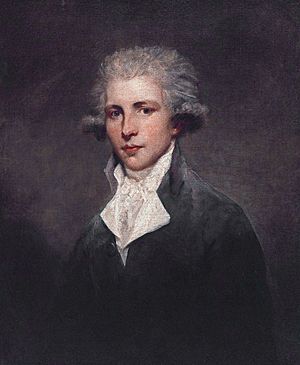Sir John St Aubyn, 5th Baronet facts for kids

Sir John St Aubyn, 5th Baronet (born May 17, 1758 – died August 10, 1839), was an important British politician. He served as a Member of Parliament and also held the role of High Sheriff of Cornwall. He was also a leader in the Freemasons group.
Born in London, Sir John inherited his family's title and their estate called Clowance in Cornwall in 1772.
Contents
About Sir John St Aubyn
His Early Life and Family
John St Aubyn was born on May 17, 1758, in Golden Square, London. His father, also named Sir John St Aubyn, was a Member of Parliament. His mother was Elizabeth Wingfield. John had a younger sister, Catherine St Aubyn, who became an artist.
John went to Westminster School from 1773 to 1777. After school, he spent three years in France. He had a daughter during this time.
His Public Roles and Interests
When his father passed away on October 12, 1772, John became the 5th Baronet. He also inherited the family's large estate, Clowance, which was near Crowan, Cornwall.
Sir John held several important public jobs. In 1780, he was the High Sheriff of Cornwall. This was a key role for keeping law and order in the county.
He then became a Member of Parliament (MP) for different areas. He represented Truro in 1784. From 1784 to 1790, he was the MP for Penryn. Later, from 1807 to 1812, he served as the MP for Helston.
Sir John St Aubyn was also very interested in palaeontology, which is the study of fossils. He was a well-known fossil collector. He had his own collection and also bought a large collection from Richard Greene, a surgeon. In 1797, he was chosen to be a Fellow of the Royal Society. This is a special group for top scientists.
His Later Life
Sir John St Aubyn passed away in August 1839 when he was 81 years old. After his death, his title as Baronet ended because he had no legitimate sons to inherit it.
His estate was passed down to his son, James. Another son, Edward, later received his own baronet title in 1866. Edward's family became known as the Barons St Levan. Sir John is buried in Crowan, and his grave has a special monument made by the sculptor William Behnes.

